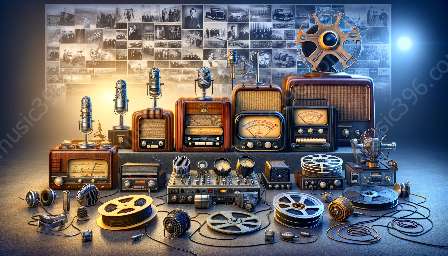Radio audience measurement plays a critical role in understanding and analyzing the performance and reach of broadcast radio stations. It encompasses various methods and tools to quantify the size and characteristics of radio audiences, allowing broadcasters and advertisers to make informed decisions based on accurate data. In this comprehensive guide, we will delve into the fundamentals of radio audience measurement, its significance for audience measurement in radio, and its impact on the radio industry.
The Basics of Radio Audience Measurement
Radio audience measurement refers to the process of collecting and analyzing data related to radio listenership. This includes capturing information about the number of listeners, their demographics, listening habits, and preferences. Through sophisticated methodologies and technologies, radio audience measurement provides valuable insights into audience behavior and engagement with radio content.
Methods and Technologies
Several methods and technologies are utilized for radio audience measurement, each with its own strengths and limitations. Traditional methods include diary-based surveys, where participants record their listening habits over a specific period. More advanced approaches involve electronic measurement devices, such as Portable People Meters (PPMs) and metering technologies embedded in electronic devices. These tools provide accurate and real-time data on listener behavior, offering a more comprehensive understanding of radio audiences.
Implications for Audience Measurement in Radio
Effective radio audience measurement is crucial for accurate audience measurement in radio. Broadcasters rely on audience measurement data to evaluate the performance of their radio programs, understand listener preferences, and tailor content to attract and retain audiences. Advertisers also depend on reliable audience measurement to make informed buying decisions and ensure that their marketing messages reach the right audience at the right time.
Understanding Radio Audience Behavior
By harnessing the power of radio audience measurement, industry stakeholders gain valuable insights into audience behavior and consumption patterns. This knowledge allows broadcasters to develop targeted content strategies, enhance listener engagement, and optimize programming schedules. Furthermore, it enables advertisers to craft more effective ad campaigns that resonate with their target demographics, maximizing the impact of their advertising investments.
Industry Impact and Innovations
The evolution of radio audience measurement has sparked notable changes within the radio industry. New technologies and methodologies continuously enhance the accuracy and granularity of audience measurement, paving the way for more precise targeting and personalized content delivery. This has led to a shift in advertising strategies, with a greater emphasis on data-driven decision-making and audience-centric approaches. As the radio landscape continues to evolve, audience measurement remains a linchpin for driving innovation and growth in the industry.









































